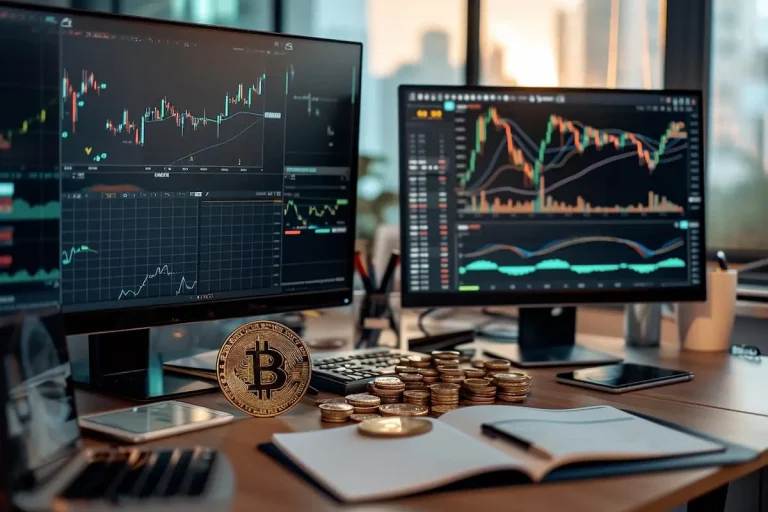Content
These strategies are based on careful market analysis, risk management principles, and personal trading styles. By carefully considering these aspects, you can better understand which approach – trading or investing – is more suitable for your financial situation, goals, and comfort level with risk. It’s also important to note that many successful financial strategies incorporate elements of both trading and investing, providing a balanced way to approach the financial markets. There are several types of trading, including day trading (buying and selling within the same day), swing trading (holding for days or weeks), and position trading (long-term holding). Each style demands different Prime Brokerage skills and strategies, with varying degrees of risk and potential reward. These mathematical models offer the ability to parse vast volumes of data rapidly.
Statistical Arbitrage Strategies
Algo traders often require high-performance computing infrastructure to process vast amounts of data and execute trades with low latency. High-performance servers and low-latency network connections are critical components. Quantra’s self-paced algorithmic trading courses are one of the most demanded courses. It’s Algorithmic Trading for beginners learning Track provides you a list of goals to trading algorithms examples choose from. Each goal presents you with an organized set of such informative courses that should serve your purpose.
Step 6 – Risk and performance evaluation
- Algorithmic trading can break up that trade into smaller increments to be deployed at coordinated times.
- Volume-weighted average price strategy breaks up a large order and releases dynamically determined smaller chunks of the order to the market using stock-specific historical volume profiles.
- If you can’t build from the ground up your own algo machine you have the option to buy algorithmic trading strategies.
- So, such algorithms will typically buy during uptrends and sell when there is a downtrend.
- The algo jumps on that momentum spike with buy or sell orders and a tight stop.
This coordinated trading behavior among informed investors is known as collusion. https://www.xcritical.com/ Apart from trading stocks, ML models have also been helping forex traders. The market’s daily trading volume is in excess of $7.5 trillion, a significant 14% increase year-on-year.
High-Frequency Trading (HFT): Insights into Its Workings, Strategies, and Impact on Financial Markets
Algorithmic trading relies on automated strategies that identify profitable opportunities in the financial markets. These strategies, driven by mathematical models and historical data, allow traders to execute trades at high speeds with minimal human intervention. This article provides an overview of the most common trading algorithms and strategies, giving you a foundational understanding to start building your own. Algorithmic trading strategies are a set of instructions coded into trading software to automatically execute trades without human intervention. Traders use these strategies to secure the best prices for stocks on the stock exchange, exploit arbitrage opportunities, or capitalize on price changes in the financial market.


One of the most common examples of such an arbitrage opportunity is a stock that is trading at two slightly different prices on the National Stock Exchange (NSE) and the Bombay Stock Exchange (BSE). However, to leverage this price difference, you need to pinpoint such opportunities with speed and accuracy. The products and services offered by the StoneX Group of companies involve risk of loss and may not be suitable for all investors. There are many advantages to algo trading depending on the type of player and market traded in.


But most importantly, you can analyze vast data sets and backtest strategies, increasing your confidence in the strategies you’ve developed. Additionally, the platform’s proprietary coding language, EasyLanguage, makes it easier and faster to code your own strategies compared to something like Python or R. Keep in mind that these are basic versions of mean reversion strategies and are unlikely to be profitable without some tweaks and personalization.
Throughout this best algorithmic trading guide, we want to focus on profit-seeking algorithms. With advancements in technology, algorithmic trading has become more accessible to retail traders, unlocking a host of opportunities to profit in the market. It’s vital that you start paper trading before you risk real money as it’s all too easy to over-optimize and curve fit strategies to the past, so the real test happens in live market conditions.
Algorithmic trading can also help traders to execute trades at the best possible prices and to avoid the impact of human emotions on trading decisions. AI algorithms differ from human traders in that they do not simply mimic human behavior. Traditional theories and experimental studies on human behavior fall short in explaining the actions of AI traders and the market equilibria they may form. AI operates with a distinct form of intelligence, where decision-making is guided by pattern recognition rather than emotions or logical reasoning, making it unaffected by higher-order beliefs.
As a result, a handful of very profitable proprietary firms have emerged and entire research divisions within established hedge funds have been created. Conversely, it will sell the asset when the fast moving average crosses the slow moving average from below due to a strong positive price change. Here are some of the best resources out there — we’ll do a deeper dive on each of the platforms and resources below later on in the post. Before embarking on your own algorithmic trading journey, take the time to understand the worst-case scenarios and implications of incorrect assumptions.
To use it, the first step is to gain an understanding of common algorithmic strategies, such as trend-following, mean reversion, high-frequency trading and arbitrage (more on these later). The algorithms are pre-programmed to execute buy and sell orders based on certain variables, or a set of variables, taking place without human intervention. Peter’s experience emphasizes that there is no one-size-fits-all path in algorithmic trading.
Assets subject to price increases will have a weight above their target, whereas those that underperformed will be under-represented. In order to readjust the weights of the portfolio, the algorithm will sell those assets that overperformed, and vice-versa. It is worth mentioning that, because of how easy it is to quickly create and deploy a trading algorithm based on machine learning techniques, cautionary examples of important fails have also been reported. There are also more subtle approaches in which machine learning models are used for trading purposes. Instead of just trying to predict the price on t+1, ML models are commonly used for creating signals and variables used as inputs for trading. A model that can accurately predict the weather for the coming season will in turn be useful for predicting the season’s output of a given commodity, like soy, corn, or sunflower.
Prop firms leverage advanced technology and data analysis to gain a competitive edge, making algorithmic trading a key component of their operations. Additionally, some trading strategies mentioned above, such as high frequency trading, are only possible with algorithmic systems. Being able to build profits in a quiet market with small movements is a relatively new development in trading, all made possible by algorithmic strategies. These rapid trades also reduce implementation shortfall, which occurs when a trader receives a different price than expected due to lags in the trading process. In fact, one of the most profitable hedge funds of the last decade runs algo strategies based on mathematical models.
These algorithms typically rely on volatility indices, market trends and historical data to predict volatility shifts in the market. The algorithm can be configured to increase your investments in a particular stock or security when the volatility is expected to decrease. Conversely, if an increase in volatility is expected, the algorithm may prioritise safer investments in your portfolio’s asset allocation. You can use algorithmic trading to track macroeconomic data, local and global markets and even company-specific data. This can be pivotal to accurately identifying risk-on and risk-off phases.
In addition, an automated trading platform provides a means to execute the algorithm. Finally, it manages the computer programs designed by the programmers and algo traders to deal with buying and selling orders in the financial markets. News-based trading using algorithms involves tracking and acting on news stories, economic reports and even media feeds in real time. These algorithms typically use Natural Language Processing (NLP) to analyse relevant news items and monitor how the market reacts to such developments. Then, based on how stock prices are affected, the algorithmic trading strategy can initiate a new trade or close an existing position.